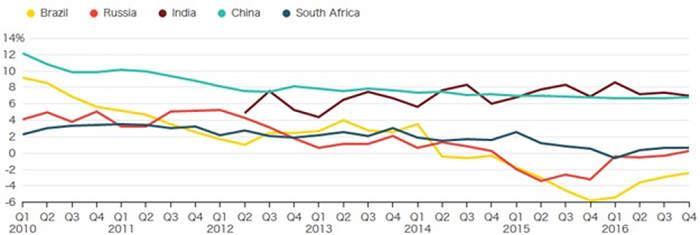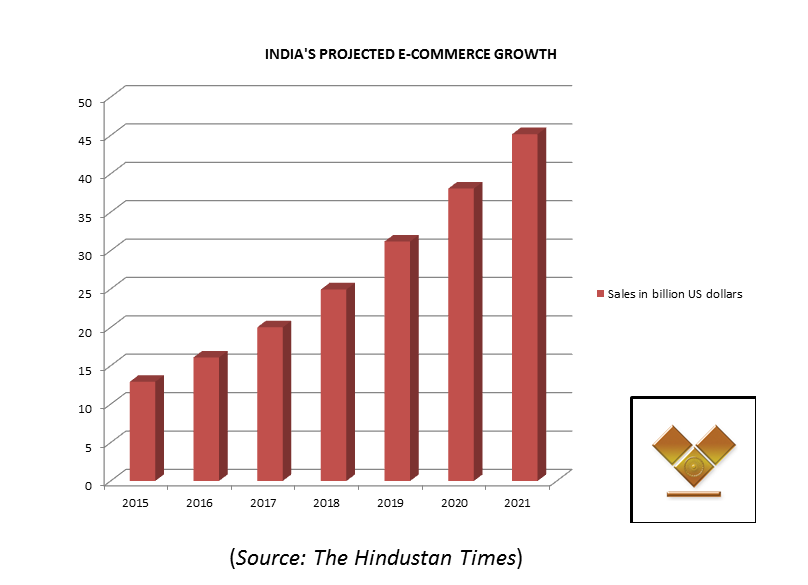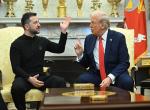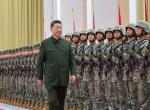Looking Back
Last year Brazil, Russia, India, China, South Africa (BRICS) group conducted its summit in October under the Chairmanship of India. PM Modi had outlined ‘Building Responsive, Inclusive and Collective Solutions’ as the core-theme for BRICS chairmanship. Enhancing greater people to people participation in BRICS events was also given priority. In fact, a five- pronged approach comprising of ‘Institution Building, Implementation, Integration, Innovation, and Continuity with Consolidation’. Thus, ‘Development with Continuity’ was said to be the fundamental basis for BRICS cooperation that was emphasized during the last summit. Therefore, the theme of BRICS Summit of 2017 at Xiamen, China i.e. ‘Stronger Partnership for Brighter Future’ and five key priority areas of ‘deepening cooperation for common development, strengthening global governance, carrying out people to people exchanges, making institutional improvements and building broader partnerships’ resonated very well with the thrusts of previous summits.
The overall goal during India’s stewardship of BRICS had been to give it shape and substance both in terms of making it a responsible multilateral institution, firstly, as an important factor in geopolitics and secondly, in the emerging economic discourse. It can be seen that BRICS Summit at Xian has made a major progress on finding common ground on the question of terrorism in addition to making incremental advances in other areas.
Terrorism and Global Governance
PM Modi’s preferences and direction of his efforts can be easily discerned from the speeches at the last summit as well as the summit held at Ufa in 2015. Countering global and regional terrorism through a unified approach has been one of his major themes which is also linked to global governance in many ways. Though, it is a different matter that at the international level, there is still no agreement on the definition of terrorism. Thus, under India’s stewardship an attempt was made to shift the emphasis from the narrow aspects of economy to the larger aspects of global issues where combating terrorism has acquired increasing urgency. As terrorism has become globalized the response to it also has to be at a global level.
A common approach on terrorism by BRICS could contribute positively to the emerging international security architecture. In its joint statement of October 2016 BRICS had strongly condemned terror attacks, against some BRICS countries, including those in India. However, this year the BRICS joint communique of September 2017 has gone far beyond by naming the terror groups and expressing concern on security situation in the region and violence cause by such groups. The list of terror groups named includes Taliban, Islamic State (IS)/DAISH, Al-Qaida and its affiliates including Eastern Turkistan Islamic Movement (ETIM), Islamic Movement of Uzbekistan, the Haqqani Network, Lashkar-e-Taiba (LeT), Jaish-e-Mohammad (JeM), Tehri-e-Taliban Pakistan (TTP) and Hizb-ul-Tahrir. The statement also strongly condemned terrorism in all its forms and manifestations and stressed that there can be no justification whatsoever for any acts of terrorism, whether based upon ideological, religious, political, racial, ethnic or any other reasons. It also emphasized the need to strengthen cooperation in combating international terrorism both at the bilateral level and at international fora.
In the BRICS Foreign Ministers meeting held in June this year leading up to the forthcoming summit in Xiamen, China had reiterated their commitment to fight against terrorism and form a broad coalition under the aegis of UN which could provide a coordination role. India has been seeking cooperation of BRICS partners to support the adoption of a comprehensive convention on terrorism at the UN and not to differentiate between ‘good’ and ‘bad’ terrorists. While declarations on the need for joining forces to counter terrorism are routinely made either from the BRICS platform or elsewhere, it is also quite evident that there are not only differences between the BRICS members on approaches to terrorism but also at the international level there is no agreement on the definition of a terrorist. Though China has acceded to LeT and JeM being named in the BRICS communiqué, it is not clear whether it will remove technical hold placed on JeM leader Masood Azhar to be designated as a global terrorist at the UN.
India’s Efforts: Goa Summit
Of course, looking at the year long list of events organized by India in connection with BRICS that had ranged from renewable energy to scientific research, from measures to adopt for combating corruption to the establishment of a film festival the agenda was far more diversified and comprehensive. As it is quite evident all the five members of BRICS share common perspectives on many of the global issues and have been working to change the western dominated narrative be it economic or strategic issues.
Building on the theme of continuity and consolidation, the last BRICS Summit in Goa had kept the Ufa declaration in view which aimed at working out a strategy for economic partnership, and consequently, India had worked on a programme to develop trade, investment and economic cooperation in a number of fields, including manufacturing, minerals processing, energy and agriculture. This was in line with a 10-point programme for consensus between member-countries, to impart momentum to the process of closer cooperation between BRICS nations. The ten steps for enhancing cooperation include a BRICS trade fair, a railway research centre, cooperation among supreme audit institutions, a digital initiative, an agricultural research centre, a forum of state/local governments among the BRICS nations, cooperation among cities in the field of urbanization, a sports council and an annual sports meet, for the first major project of New Development Bank (NDB) to be in the field of clean energy and a film festival. These initiatives were given a practical shape for implementation.
India had also showcased its initiatives like ‘Make in India’ project and sought investments from BRICS in the field of infrastructure development. India also held a Trade Fair and an Investor Forum to promote programmes such as Make In India, ‘Smart City Mission’, ‘Digital India’, and ‘Start-up India’, all part of PM Modi’s initiatives where BRICS members could cooperate in many ways.
BRICS and Sustainable Development
The BRICS have also aligned with the 2030 Agenda for Sustainable Development of the UN. The Sustainable Development Goals (SDG) have chosen very ambitious targets and results to be achieved by the international community; the BRICS community would have to really work very hard to achieve them. The SDGs would provide guidance for development strategies and priorities of BRICS members. According to one assessment, the BRICS countries have achieved a degree of success in advancing SDG 7 (on clean energy) and SDG 9 (on infrastructure development) through the NDB’s rollout of renewable energy infrastructure projects. Sustainable use of water resources is another area where progress can be made through mutual cooperation. India has been successful in its efforts of water conservation in the State of Rajasthan where the age-old traditions of water conservation and practices of sustainable use of water resources had virtually made it a drought-free State. Therefore, effective implementation of Sustainable Development Agenda, 2030, and ensuring adequate funding for the same should continue to be the objective of the BRICS group.
Sustainable development becomes more relevant and important at a time when the US has revised its stance on climate change. BRICS can lead the new discourse and stick to their commitments given during Paris Climate Change conference and work together for bolstering the green economy. The European leaders have been critical of the US move on climate change and they could be coopted for providing green technologies. Thus success of sustainable agenda is heavily dependent upon its successful implementation by BRICS countries.
The BRICS has also been cooperating with a number of UN initiatives, programmes and organization like UNESCO, WHO and the United Nations Industrial Development Organization (UNIDO) to advance shared objectives and coordinate policies for development in a variety of diverse fields. During BRICS summits the host nations have also been reaching out to regional multilateral groupings to advance shared agendas like India invited the Bay of Bengal Initiative for Multi-Sectoral for Technical and Economic Cooperation (BIMSTEC). Overall aim was to boost ties between the BRICS countries and BIMSTEC as part the regional outreach efforts to fortify South-South cooperation. Other members have also organized similar outreaches during their turn for hosting the summits.
BRICS: State of Economies
It is quite evident that amongst the BRICS economies both India and China are growing at a good pace despite the fact that Chinese economy has been decelerating in the recent years. While India needs investments for its infrastructure development China has the capacities and desire to cooperate with India for a win-win outcome. Many Chinese companies have been looking at India to deploy their surplus capacities and funds in India. Some have already come in with big investments in reality sector (Wanda group), electronic sector, and infrastructure development (construction of roads as also survey for railway line). India wants to export its IT services, pharmaceuticals and other services and products for which ways need to be found for mutually beneficial cooperation. Both sides need to work on reducing the impediments and improve ease of doing business with each other.
All BRICS members have their unique strength and characteristics despite the fact that other than China and India their economies have not been doing well. Apparently, Russian economy seems to have returned to growth path in recent months. Similarly, Brazilian economy is reported to have recovered from recession of the previous years and its GDP growth is forecasted to be 0.5% in 2017 compared to -3.3 percent in 2016. South Africa is also expected to post a GDP growth of 1.4 per cent in 2017 versus 0.5 per cent in 2016 and projected to rise further to 1.8 per cent in 2018.

Russia continues to be an important strategic partner of India in many ways and has been cooperating with India in both civil nuclear energy and hydro-carbon sectors besides the defence sector. Russia has been supportive India’s membership in UN Security Council and other multilateral platforms. Brazil is an important country because of its size and population but also as a launch pad for rest of the Latin Americas. Last year, on the sidelines of the BRICS summit, India and Brazil had finalized the text of a bilateral investment agreement, and inked pacts to deepen cooperation in fields of cattle genomics and agriculture. There is a great scope for cooperation in areas of ship building, pharmaceuticals, defence production, ethanol production and oil and gas. Similarly, the India- South Africa equation remains very important both on bilateral basis and as partner in BRICS and IBSA (India, Brazil and South Africa) group. South Africa is also important as a launch pad for the other countries in the African Continent. Strengthening of relationship in multiple areas with BRICS partners was India’s agenda for the last summit as also for the forthcoming summit.sites closely with Brazil, India
BRICS Institutions
Developing BRICS as an institution has been one of the important goals of the member countries. Thus the NDB is seen as an achievement of the BRICS, and with India in the lead it has sought to advance sustainable development projects through lending. Ways to strengthen the NDB, both bilaterally and multilaterally, would continue to be an important part of the BRICS’ deliberations. NDB has already approved loans of over 800 million USD four renewable green energy projects in India, China, Brazil and South Africa. India, of course, has an insatiable requirement for infrastructure investment funds. In April this year India has proposed projects worth USD 2 billion for loans. Evidently, this offers an enormous opportunity to an institution like the NDB, whose core mandate is sustainable infrastructure development. Last year NDB issued the first set of green bonds in RMB for about 447 million USD. In addition, the BRICS Contingent Reserve Arrangements (CRA) was operationalized thus strengthening the global financial safety net.
On the other hand, emergence of BRICS as an alternative forum to the West dominated worldview of established economies is proceeding on a very gradual and incremental path. Some feel that nature of differing political systems of BRICS members also contribute to differing approaches being adopted at the global level. At times, adopting a common view on global macro-economics, development aid and international resource transfers and global governance etc. also present a challenge. Further, some research reports indicate that there is a negative impact of the trade policies of individual BRICS members on each other. Commercial ties between them are still characterized by a lack of harmony and discriminatory trade distortions. Trade imbalance between China and India, non-tariff barriers or other kind of discriminatory practices prevent a balanced and harmonious economic relationship occurring between the both sides. There are also concerns regarding less than required trade and commercial relationship between India and rest of the BRICS members. India’s goal is also to work for greater cooperation among BRICS in services and in the ways to deal with non-tariff measures restricting goods trade between BRICS member-countries. India has much strength in this sector as compared to the manufacturing sector.
Many other BRICS institutions like BRICS Agriculture Research Centre, BRICS Railway Research Network and BRICS Sports Council, to name a few, are in the offing to derive benefits from mutual cooperation and synergies. Possibility of establishing a BRICS Rating Agency based on market-oriented principles, in order to further strengthen the global governance architecture, is also being explored. Space is another area where BRICS have moved ahead in cooperating with each other. BRICS space agencies have agreed in early February this year on a protocol to share and exchange data, including images of natural resources from remote-sensing satellites for mutual benefit. While only Brazil, Russia, India and China have remote-sensing satellites in the sun-synchronous orbit, they will share data with South Africa also which does not have similar space assets. Such a step would exploit the existing capacities optimally. BRICS space agencies have plans to exchange data for tele-education, tele-medicine and for a variety of other applications which would benefit people of the member nations.
Status of BRICS Platform: India China Equation and FTAs
While development of BRICS mechanism which definitely has a clout given size of its economies, populations and resources and which is proceeding in the right direction, it is still to acquire much heft both geopolitically and economically. Strategic divergences between the members at times prevent a coordinated approach to be adopted by members to evolve common positions on international issues. Insofar as India and China are concerned, both can work closely in a number of areas, though heightened strategic dissonance between the two would obviously have a negative impact on the effectiveness and functioning of the BRICS as an important forum. President Xi in fact had said that “China is willing to work with India to maintain their hard-won sound relations and further advance their cooperation”.
Last year and as also this year, in ministerial and other forum meetings leading up to BRICS Summit, there were proposals by China for a Free Trade Agreement (FTA) between the five major emerging economies which could not find much favour with the other members of the grouping. Evidently, China’s aim was to expand trade between BRICS members but fears of Chinese imports hurting their local manufactures are paramount. Other countries were also not keen to start negotiations on a separate BRICS Investment (protection & promotion) Treaty. India in any case is participating in Regional Comprehensive Economic Partnership (RCEP) which would be a regional FTA that includes India and China. It is another matter that even RCEP may not turn out to be of much benefit to India. There is also a possibility of India and Eurasian Economic Union (EAEU) signing a FTA in coming July as both sides have accepted a report prepared by a Joint Feasibility Study Group.
A BRICS Roadmap for Trade, Economic and Investment Cooperation until 2020 has been evolved which involves a number of projects and mechanisms to realize the same. The emphasis is on enhanced cooperation in e-commerce, ‘single window’ processes, Intellectual Property Rights (IPR) cooperation, trade promotion and micro, small and medium enterprises (MSMEs). In fact, last year five companies, i.e. one each from BRICS, came together to form a joint venture to exploit a Siberian Gold Mine located in Chita region. The pre-production investment was said to be in the range of 400-500 million USD. It is expected to produce 12 million tons of gold ore annually. This project can provide a model for future cooperation within BRICS and even for joint ventures in countries outside the BRICS.
In November last year BRICS’ Communication Ministers had prepared an action plan to institutionalize cooperation in Information and Communication Technologies (ICT) arena through identifiable goals and objectives for developing knowledge societies in the group. This year, it is hoped that this BRICS initiative will be taken forward for implementation as part of sustainable development goals. This has also found reflection in this years’ joint communique but much needs to be done as implementation remains a grey area. With a plethora of BRICS initiatives being announced ensuring substantial action on the same becomes a casualty, especially in the absence of a BRICS secretariat.
Cooperation in E-Commerce
BRICS in general and India in particular has been looking to cooperate in e-governance, financial inclusion and targeted delivery of benefits, e-commerce, open government, digital content and services, and bridging the digital divide. Joint efforts are aimed at capacity building for effective participation in e-commerce trade to ensure shared benefits. In fact, Chinese firm Alibaba has a very strong presence in Indian e-commerce market and is a strong competitor to Amazon. The graph depicted below gives the projections for India’s projected growth in the area of e-commerce.

India is also promoting ‘Blue Economy’ which lays emphasis on bringing sustainable utilization of the fisheries’ wealth from marine and other aquatic resources. The use of information technology (IT) and space technology for improving the capacities of the fishing community, and strengthening the monitoring, control and surveillance systems are the areas where they could be mutual cooperation between the BRICS countries as they are all nations endowed with marine& aquatic wealth. However, such resources are extremely vulnerable to environmental degradation, overfishing, climate change and pollution. Thus in conformity with UN Sustainable Development Goal Number 14, BRICS should evolve suitable mechanisms/frameworks to promote the sustainable use and preservation of marine and coastal eco-systems.
Concluding Observations
While development of BRICS mechanism which definitely has a clout given size of its economies, populations and resources, and which is proceeding in the right direction, it is still to acquire much heft both geopolitically and economically. Strategic divergences between the members at times prevent a unified approach to be adopted by members for evolving common positions on international issues. Similarly, economic issues also need to be dealt in a manner that there is a win-win situation for all the stakeholders. While the US under the new administration is moving towards more protectionist tendencies and as it looks inwards, the BRICS group has the opportunity to emerge as an important voice in global governance, its associated reforms and developmental policies.
As a basic framework, the UN SDGs provide an important guideline based on which mutual cooperation should be pursued in the coming years. While BRICS partners have broadened their mutual cooperation in large number of areas it still has to acquire depth in most of the areas. The other question which needs to be answered is whether time has come to establish a BRICS Secretariat. Further, the proposal for BRICS expansion at this stage seems to be a bit premature as the international environment continues to be in a state of flux, and therefore it will be pragmatic to consolidate the BRICS platform before venturing into enlargement of the grouping. Thus, in the coming years BRICS would have to strive hard to remain relevant and become an important and significant institution which can present an alternative narrative.
Image Source: https://kalingatv.com/latestnews/brics-shares-indias-terror-concerns/











Post new comment